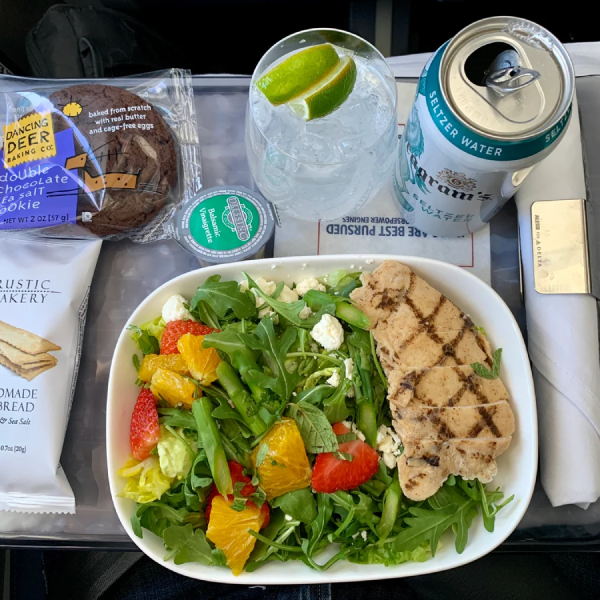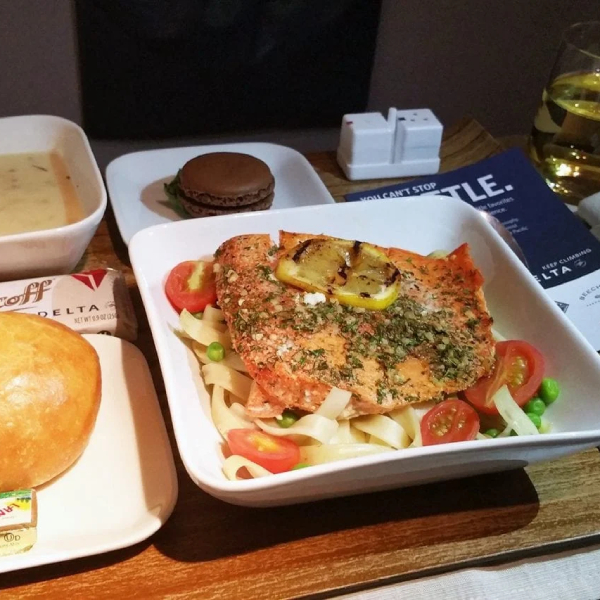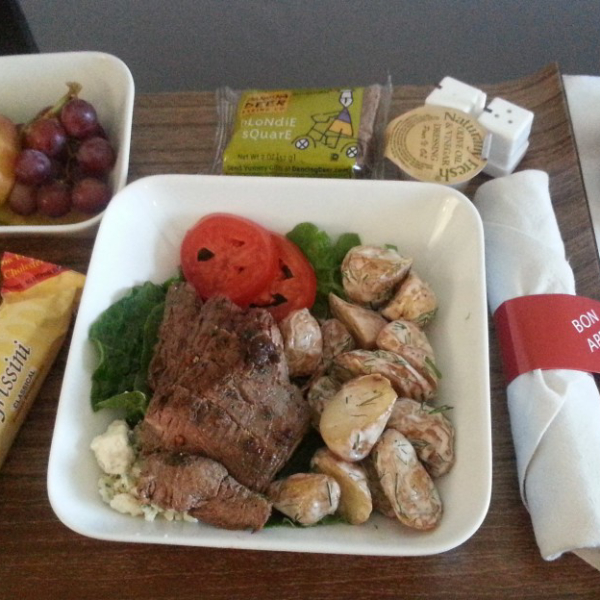Introduction to Airport Security Food Rules
Navigating through airport security can be tricky, especially regarding what food you can bring on board. Whether you’re packing a snack for a short flight or meals for a long journey, understanding the rules is vital. Air travel restrictions often change and can be confusing. However, guidelines exist on what types of food you can carry in your hand luggage. Solid foods are generally allowed in your carry-on but come with conditions. Creamy, liquid, and gel-like foods follow the 3-1-1 liquids rule established by the Transportation Security Administration (TSA). This rule limits the size and quantity of these items in your carry-on bags.

When deciding to bring food in your carry-on, think about the screening process. Solid items like sandwiches and dry snacks usually pass without issues. Yet, items such as creamy dips or drinks must comply with specific limitations. Remember, the rules for checked baggage differ, often being more lenient, allowing for a greater variety of food. Always check the TSA’s official guidelines or reach out to their support channels, like @AskTSA on Twitter, before your flight. Security officers have the final say, and items that alarm during the screening may not be allowed. Stay informed, pack smart, and you’ll breeze through airport security with your favorite snacks in tow. When traveling with United Airlines, it’s important to remember their free carry-on policy allows you to bring snacks on board, but be mindful of TSA screening rules to ensure a hassle-free experience with your favorite foods.
What You Need to Know About Solid Foods in Carry-Ons
When packing solid foods for air travel, several important factors come into play. Here are some key points to help you understand what solid foods you can bring in your carry-on luggage and ensure a smooth journey through airport security:
- Packaged Foods: Pre-packaged snacks like chips, cookies, and granola bars typically pass through security with ease. Make sure they are not open when you pass through security.
- Fresh Items: Whole fruits, vegetables, and sandwiches in plastic containers or bags are usually fine. However, consider how they might be viewed by security scanners.
- Odor Consideration: Foods with strong smells can cause discomfort to fellow passengers. It’s best to avoid them.
- Size and Quantity: While there isn’t a limit to how much solid food you can carry, be mindful of space. Your carry-on must fit in the overhead bin or under your seat.
- Security’s Discretion: Remember, the final decision rests with the TSA officer. They have the authority to prohibit any items they consider a security risk.
- Check Rules for Destination: Some foods allowed by TSA might be restricted at your destination. Check local guidelines to avoid issues upon arrival.
- Keep it Neat: Organize your food to facilitate the security check. Separate them from other items in your carry-on to show clearly at the X-ray inspection.
- Avoid Hassles: To prevent any potential hold-up at security, consider buying snacks after the checkpoint. This way, you won’t have any issues with food rules.
By following these guidelines and using common sense, you can bring solid foods in your carry-on without disrupting your travel plans.
Guidelines for Carrying Liquids and Gel-like Foods
Carrying liquids and gel-like foods in your carry-on requires extra attention. To ensure your snacks pass through security without any hiccups, consider these pivotal rules:
- 3-1-1 Rule Compliance: All the liquids and gels must abide by the TSA’s 3-1-1 liquids rule. This means each item should be in a container that is 3.4 ounces (100 milliliters) or smaller. Additionally, all containers must fit into a single, clear, quart-sized bag.
- Separation from Other Items: During screening, place your clear bag with liquids and gels separate from your carry-on in a screening bin. This helps security officers see clearly and prevents bag searches.
- Consider Exceptions: Certain foods like baby formula, breast milk, and medications exceed the 3.1 ounces limit. Declare these items to security officers before scanning for separate screening.
- Be Prepared for Additional Screening: Even if you follow the guidelines, some items might trigger additional screening. Stay patient and cooperative with TSA agents.
By keeping containers small, separating them for easy viewing, and understanding exceptions, you can carry liquids and gel-like foods without disrupting your journey. A designer suitcase can enhance your travel experience, especially when it’s equipped to keep containers small and separate, allowing you to carry liquids and gel-like foods effortlessly while avoiding any travel disruptions.

Special Instructions for Fresh Produce and Meats
When traveling with fresh produce and meats in your carry-on, specific guidelines apply. It’s essential to follow these instructions to ensure a smooth security clearance and compliance with TSA regulations. Here are the key points to consider for these food items:
- Inspection Ready: Fresh fruits and vegetables should be clean and visible to TSA officers. Packing them in clear plastic bags helps.
- No Liquids or Gels: Remember to remove all excess liquid from meats or produce, as they could classify as gels.
- Ice Packs: If using ice packs to keep food cold, they must be frozen solid. Partially melted packs may not be allowed.
- State Restrictions: Be aware of agricultural restrictions when traveling to certain states such as Hawaii as some fresh produce may not be permitted.
- Packaging Matters: Meat should be securely wrapped to prevent leaks. This keeps your luggage and the screening area clean.
- Labeling: Clearly label any containers or packages. This helps TSA agents identify the contents quickly.
- Consider Dry Ice: For longer flights, dry ice is acceptable for keeping items frozen. But it must adhere to FAA regulations.
- Alert the Officer: Tell the security officer about any fresh food in your carry-on. This can speed up the screening process.
By sticking to these special instructions, you can transport fresh produce and meats hassle-free. Keep these tips in mind to ensure that you and your food arrive at your destination without any complications. When you decide to bring food in carry on, following special instructions can make a significant difference, ensuring your fresh produce and meats remain safe and fresh throughout your journey.
Understanding TSA’s 3-1-1 Liquids Rule
Navigating airport security can be complex. The TSA’s 3-1-1 Liquids Rule often causes confusion. Understand this rule to prevent delays or items being discarded. In essence, the 3-1-1 rule applies to carry-on bags and outlines how passengers should pack liquids. When preparing your makeup suitcase for air travel, it’s essential to adhere to the TSA’s 3-1-1 Liquids Rule to ensure a smooth security process and avoid having your items confiscated.
What is the 3-1-1 Liquids Rule?
The 3-1-1 Liquids Rule is quite straightforward. Here’s how it breaks down:
- 3: Liquids must be in 3.4 ounces (100 milliliters) bottles or less per item.
- 1: All bottles should fit in one clear, quart-sized, zip-top bag.
- 1: Only one bag is allowed per passenger in the carry-on.
This rule includes drinks, gels, aerosols, creams, pastes, and spreads. Items exceeding these limits must go in checked luggage.
Why Does the TSA Have This Rule?
The rule’s main goal is security. It helps officers quickly scan carry-on items for potential threats. Limiting the size of liquid containers reduces the risk of prohibited items being brought onto planes.
Exceptions to the Rule
The TSA does offer exceptions for specific items:
- Medications: Liquid medications often do not have to adhere to the 3.4 ounces limit.
- Baby Foods: Breast milk, formula, and baby foods may be in larger quantities.
Always declare these items at the checkpoint for separate screening.
Tips for Compliance with the 3-1-1 Liquids Rule
- Prepare Beforehand: Have your liquids bag ready before you reach security.
- Buy Travel Sizes: Purchase or transfer liquids into travel-sized containers.
- Check Food Products: Many people forget that foods like yogurt and peanut butter count.
Getting through TSA with your carry-on food is doable. Pack appropriately, know the rules, and you’ll breeze through security. Remember, always check the latest restrictions before your flight, as rules can change. When you plan to bring food in your carry-on, ensure that you’re familiar with the latest TSA guidelines to make your airport experience smooth and hassle-free.
Foods to Avoid Bringing in Your Carry-On
While it’s great to know what you can bring, it’s just as important to be aware of what foods to steer clear of when packing your carry-on. Here are some items you should think twice about before bringing them aboard:
- Smelly Foods: Avoid foods with strong odors, like fish or certain cheeses, that might disturb other passengers.
- Messy Foods: Steer clear of foods that can spill or leak, causing inconvenience for you and others.
- Large Quantities of Liquids: Big containers of juices or soups must go in checked luggage due to the 3-1-1 rule.
- Spreadable Items: Things like peanut butter or cream cheeses should be in small containers to comply with liquid restrictions.
- Gel-Like Foods: Foods that fit the profile of a gel, such as jellies or soft spreads, should be avoided unless they meet the size requirements.
- Noisy Snacks: Chips or packaging that can create noise might be bothersome in the quiet cabin environment.
- Anything With Seeds or Pits: These can be an issue due to agricultural laws, especially when flying internationally.
Remember, the goal is to pass through security smoothly and have a pleasant flight without inconveniencing yourself or others. By considering these tips and being thoughtful about what you pack, you can enjoy your travel treats hassle-free. When you plan to bring food in carry on, it’s essential to choose items that comply with security regulations, ensuring a smooth passage through the checkpoints. By being mindful of your selections, you can savor your travel snacks while maintaining a pleasant experience for yourself and fellow passengers.

Tips for Packing Food in Your Carry-On
When packing food for your flight, a little planning can make a big difference. Here’s how to do it right:
- Check Containers: Use clear, resealable bags for snacks. This helps TSA see them easily.
- Pack Carefully: Wrap any sandwiches or solid snacks. This prevents squishing and messes.
- Choose Wisely: Pick foods that are less likely to spoil or smell. Think dry and durable snacks.
- Obey Limits: Follow the 3-1-1 rule for all liquids, gels, and creamy foods in your carry-on.
- Organize: Keep food items together. This can speed up the security check.
- No Messy Foods: Avoid items that might spill or leak, like yogurts or sauces.
- Avoid Allergens: Be thoughtful of others. Foods like nuts can be risky for fellow passengers.
- After Security: Consider purchasing drinks or heavier meals. This avoids carry-on food limits.
By keeping these tips in mind, you’ll have a hassle-free experience with food in your carry-on. Happy travels!
How to Handle Special Dietary Needs and Baby Foods
When traveling with dietary restrictions or baby foods, there are special rules to consider. Here’s a quick guide:
- Declare Special Items: Always tell TSA officers about dietary items, which need more care.
- Special Dietary Foods: Pack foods tied to dietary needs in your carry-on, following TSA rules.
- Baby Foods: Baby food, formula, and breast milk can exceed 3.4 ounces, with approval.
- Cooling Accessories: Ice packs for baby foods are okay. They must be frozen solid.
- Clear Packaging: Use see-through containers for special diets and baby foods, if possible.
- Travel with Documents: Have a doctor’s note for medically required foods, just in case.
- Prepare for Screening: These items might need extra screening. Plan extra time for this.
By following these steps, you can ensure your travel goes smoothly, respecting your dietary needs.
Checking Food Items: When to Opt for Your Checked Baggage
When you’re deciding what food to bring on your flight, sometimes checked baggage is best. Here are situations when you should check your food items instead of carrying them on:
- Large Quantities: If you have a lot of food, it’s easier to check it. The space in overhead bins is limited.
- Liquids and Gels: Big bottles of drinks or creamy spreads? Put them in checked bags. They don’t fit the 3-1-1 rule.
- Strong Smells: Foods with heavy odors can bother others. Check these to avoid problems.
- Delayed Flights: If there might be delays, checked food won’t be with you. It stays cool in the hold.
- Destination Rules: Some places have rules about importing food. Check these items to avoid trouble on arrival.
- Frozen Foods: Ice packs may melt. In checked bags, there’s less risk of mess.
- Specialty Items: Delicacies like wines or olive oils belong in checked baggage. They’re often too big for carry-ons.
- Convenience: Passing through security is faster without food. Buy snacks after the checkpoint instead.
Remember, checking food can prevent many travel headaches. Use carry-ons for smaller snacks and essentials. And always double-check the TSA rules before you pack for your flight. When planning your trip, it’s wise to bring food in carry on to avoid unnecessary hassles at the airport, ensuring you have your favorite snacks on hand while staying compliant with TSA regulations.

